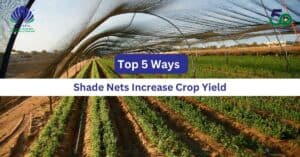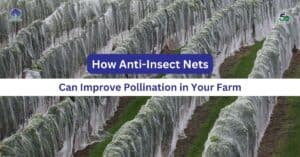Agriculture has always been the backbone of societies, providing sustenance and livelihoods for countless people around the world. However, the challenges faced by farmers in protecting their crops from extreme weather conditions, pests, and weeds have prompted the innovation and development of agricultural textiles. These textiles, also known as agro textiles, have emerged as a powerful tool in revolutionizing crop protection and enhancing agricultural productivity.
The Rise of Agro Textiles
The concept of using textiles in agriculture is not new. For centuries, farmers have employed traditional methods to protect their crops. However, with the advancement of technology, the textile industry has embraced the opportunity to contribute to the agricultural sector. Agro textiles encompass a wide range of woven, nonwoven, and knitted fabrics specifically designed for agricultural and horticultural applications.
Enhancing Crop Health and Yield
One of the primary benefits of agriculture textiles is their ability to extend the growing season and protect crops from adverse weather conditions. Extreme temperatures, frost, and excessive sunlight can have detrimental effects on crop health and yield. Shade nets, a type of agricultural textile, provide a protective barrier that filters sunlight, reducing the risk of sunburn and heat stress in plants. These nets are composed of high-quality synthetic materials, such as polypropylene and polyethylene, which offer durability and longevity.
Shielding Crops from Pests and Insects
In addition to weather protection, agriculture textiles play a crucial role in shielding crops from pests and insects. Traditional methods of pest control often involve the use of chemical pesticides, which can have harmful effects on the environment and human health. However, the use of insect nets, another type of agricultural textile, offers a more sustainable and eco-friendly solution. These nets act as a physical barrier, preventing insects and pests from reaching the crops while allowing air and light to pass through, facilitating healthy plant growth.
Weed Suppression and Soil Health
Weeds are a persistent challenge for farmers, competing with crops for nutrients, water, and sunlight. Weed control traditionally involves the use of herbicides, which can be costly and have adverse effects on soil health. Agricultural textiles provide an alternative approach to weed suppression. By covering the soil with a specially designed fabric, farmers can significantly reduce weed growth, minimizing the need for herbicides. This practice not only saves time and money but also helps maintain soil health and improve crop yields.
Soil Erosion Control
Soil erosion is a significant concern in agricultural regions with heavy rainfall or high winds. Excessive soil erosion can lead to the loss of fertile topsoil, reducing crop productivity and causing environmental damage. Agricultural textiles, such as erosion control blankets and mats, offer an effective solution to this problem. These fabrics are installed on slopes or other erosion-prone areas to stabilize the soil, preventing it from washing away. By protecting the underlying soil structure, agriculture textiles contribute to sustainable farming practices and preserve natural resources.
Innovative Applications of Agro Textiles
The development of agriculture textiles continues to evolve, with innovative applications emerging to address specific agricultural challenges. One such application is the use of thermal screens in greenhouses. These screens provide insulation, reducing heat loss during colder months and preventing excessive heat buildup in the summer. This controlled environment enhances plant growth and extends the growing season, enabling farmers to cultivate crops that would otherwise be challenging to grow in certain climates.
Choosing the Right Agriculture Textile
Selecting the appropriate agriculture textile for specific crop protection needs is crucial. Factors such as the type of crop, climate conditions, and desired level of protection must be considered. Shade nets are available in various shading percentages, allowing farmers to select the appropriate level of sunlight filtration. Insect nets are designed with different mesh sizes, ensuring effective pest exclusion while allowing for proper airflow and pollination.
Leading Providers of Agriculture Textiles
When it comes to agriculture textiles, several renowned companies have established themselves as leaders in the industry. These companies offer a wide range of high-quality products, including shade nets, insect nets, and erosion control fabrics. Some of the prominent providers include:
- Zhongshan Hongjun Nonwovens Co., Ltd.
- Hy-Tex (UK) Ltd
- Priyadarshini Filaments Pvt Ltd
- Beaulieu Technical Textiles
- B & V Agro Irrigation Company
- Neo Corp International Ltd
- Meyabond Industry&Trading(Beijing) Co.,Ltd
The Future of Agriculture Textiles
As technology continues to advance, the potential for agriculture textiles to revolutionize crop protection and enhance agricultural productivity is vast. Ongoing research and development efforts are focused on improving the durability, efficiency, and sustainability of these textiles. Furthermore, collaborations between textile manufacturers, agricultural experts, and farmers are crucial in identifying new applications and tailoring products to meet the specific needs of different farming practices.
Conclusion
Agriculture textiles have emerged as a game-changer in the field of crop protection. With their ability to extend the growing season, protect crops from pests and weeds, and control soil erosion, these textiles offer a sustainable and eco-friendly solution for farmers worldwide. As the demand for food production continues to increase, the role of agriculture textiles in revolutionizing crop protection will become even more critical. By embracing these innovative technologies, farmers can enhance their yields, reduce environmental impact, and secure a sustainable future for agriculture.




